Conserve Water, Time, & Energy
What’s in the Garden:
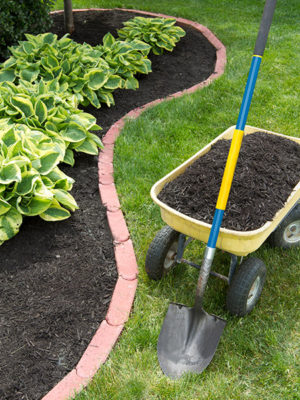
It has been a long stretch since summer in this region didn’t include some type of outdoor watering restrictions. Take some tips from the intrepid gardeners who know how to handle the heat and still keep their plantings vibrant and healthy throughout even the driest growing season.
Begin by cutting the grass: eliminating some lawn, that is. It’s not necessary to get drastic, but a report from the Rutgers Cooperative Extension points out that “turf” can be eliminated where it becomes a nuisance to grow:
- Beneath trees that produce dense shade
- On steep slopes
- Near rock outcroppings
- In narrow spaces
- In areas where active recreation inhibits grass growth
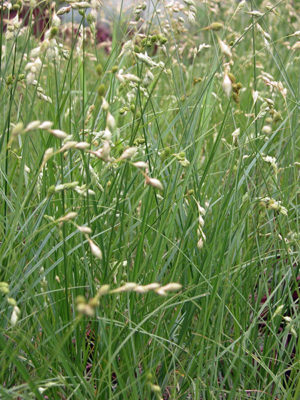
The bottom line: Work with nature, and you’ll use less water – not to mention fertilizer and fossil fuels. You’ll also be conserving your personal energy, since you will have less area to mow. That’s great news when the mercury hits 100.
Ornamental trees, ground covers, flowering plants and shrubs, and mulch are all options to replace grass. Carex pensylvanica, Oak Sedge is an excellent lawn alternative in shady areas where traditional grass will not grow. Rohsler’s is growing this Sedge along with many other ornamental grasses that can be utilized where traditional turf cannot thrive. In a sunny location, an herb and vegetable garden will also make an excellent grass substitute.
Remember that mulch will help retain moisture, moderate root temperatures, inhibit weed growth, and add curb appeal. Mulch is available in bags or bulk (cubic yards), simple to install, and provides instant visual gratification.
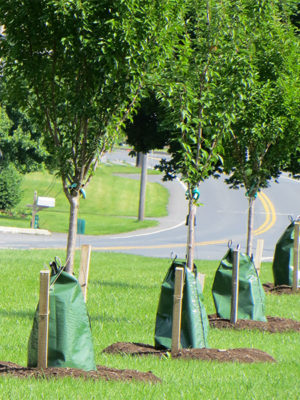 Soaker Hoses are another option when it comes to watering your plants as are Treegator bags. Treegator bags can be used to water trees and shrubs. They slowly release water over a long period of time. A drip system can also be installed to water your plants. A drip system utilizes drip lines with water emitters targeted at individual plants or plantings. These are much more efficient watering methods as opposed to overhead sprinklers which can result in water runoff. A cardinal rule regarding watering is “Less frequent watering but longer duration of watering.”
Soaker Hoses are another option when it comes to watering your plants as are Treegator bags. Treegator bags can be used to water trees and shrubs. They slowly release water over a long period of time. A drip system can also be installed to water your plants. A drip system utilizes drip lines with water emitters targeted at individual plants or plantings. These are much more efficient watering methods as opposed to overhead sprinklers which can result in water runoff. A cardinal rule regarding watering is “Less frequent watering but longer duration of watering.”
Too many times people tell us, “I water for 10 minutes every day.” In general, it is much better for plants to receive water 1-2 times per week accompanied by a deep penetrating watering. This will encourage a better and deeper root system on plants allowing them to handle drought conditions much better than shallow rooted plants. Always keep in mind that new plantings will have greater water requirements until they become established in the landscape.
There are plenty of drought-tolerant options that will allow you to maintain an attractive garden and provide shelter for beneficial insects and wildlife without taxing the aquifer.
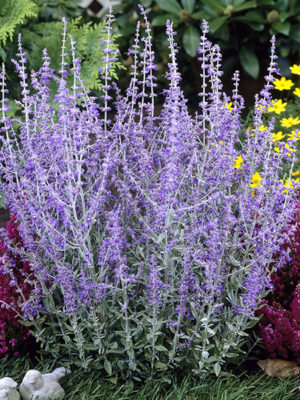
Drought-tolerant perennials include, Spurge (Euphorbia), Lavender, Sedum, Hens and Chicks (Sepervivum), Russian Sage, Delesperma (Ice Plant), Penstemon, and Phlox subulata (Mountain Pinks).
Drought-tolerant annuals include Cosmos, Lantana, Portulaca, Vinca (Catharanthes roseus), Wax Leaf Begonias, and Geraniums.
Shrubs that can take low-water conditions include Lilac, Forsythia, Weigelia, and Caryopteris and Sweet Box for dry shade.
Perennial and annual varieties of ornamental grasses add a “natural” look to casual garden plantings, and many do not require a great deal of water. Miscanthus (Maiden Grass), Schizachyrium (Little Bluestem) and Festuca (Blue Fescue) are among the top of the list for drought tolerance. As a bonus, late-season varieties like Purple Fountain Grass add interest to your landscape as other plants are finishing their blooming season.
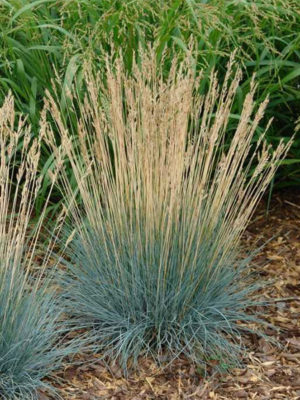
Ornamental grasses also make excellent companion plants in bulb gardens, since many of these grasses are just beginning to grow when the foliage from bulb plants is starting to fade. Rohsler’s grows over 50 different varieties of Ornamental Grasses and they can all be found in Rohsler’s Grown branded pots.
Make your garden a model of efficiency that has your neighbors wondering just how you keep your yard looking so beautiful without constant hassle. Then be sure to let them in on your “secret!”
